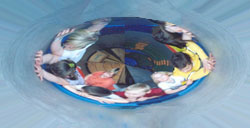Construct validity of The Democritos Movement Screening Tool for preschool children: an examination of the known groups’ criterion
The aim of the present study was to examine the construct validity of the DEMOST-PRE©, using the criterion of the known groups. For that purpose, the performance of 18 children with autism spectrum disorders (ASD), aged 48-72 months (M=66.6, SD=8.05 months) and 12 with intellectual disabilities (ID) (M=62, SD=9.42 months) on the nine items of the DEMOST-PRE© was compared to that of 18 typically developing peers (TD) (M=64.9, SD=8.74 months). According to the results, TD children demonstrated significantly higher scores than both the ASD and ID groups of children in all test items except the ‘overhead toss to a specific target’ (F2,45= 2,659, p =.081), while the performances of ASD and ID groups were similar. The current findings provide support for the construct validity of the DEMOST-PRE© indicating that it can serve as a valuable tool for preschool aged children.






